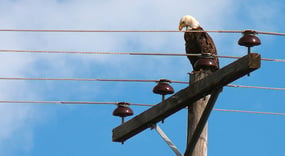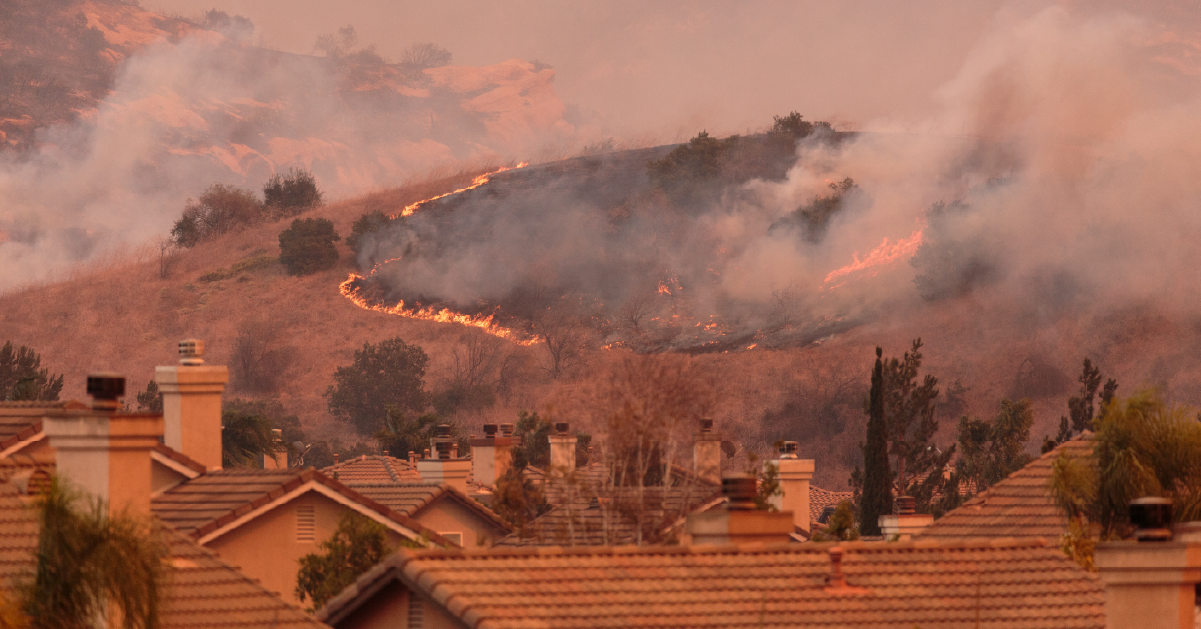
As of June 2025, the Canadian government reports that wildfires in British Colombia are on track to be the second worst on record. This fact, plus the threat of fires elsewhere, should lead utilities to consider wildlife mitigation techniques in the prevention of wildfires.
Although animals aren't the highest contributor to wildfire ignition, it is perhaps one of the more preventable risk factors.
Here are five ways wildlife can impact ignition risks in electrical power systems:
-
1. Animals are a potential fire risk
Animals conduct electricity and are flammable. Dry fur and feathers can be highly flammable in the right situation. If an animal contacts energized equipment, it can ignite and fall onto dry vegetation.
-
2. Nesting creates dangerous ignition potential and this is a serious problem for North American utilities
Nests are composed of organic matter like twigs and grasses. Birds often build nests near energized components. There is a high risk of nests catching fire and dropping to the ground. Effective mitigation strategies depend on the type of nests, the species involved, and the structures the nests are built on. In some cases, wildlife mitigation products can prevent nesting material from contacting energized components. However, this isn’t always an acceptable substitute for removing the nest.
-
3. Electrical equipment can explode when contacted by animals
Close-in faults can cause electrical equipment failures which may result in catastrophic fires. After an explosion, molten metal or flammable insulating oil is often sprayed onto vegetation below, which can cause a wildfire.
-
4. Over-voltage can lead to ignition
If animals contact a distribution transformer, there may be a fuse expulsion on the disconnect protecting the equipment. Damaged insulation or windings may increase the voltage on the secondary side of the transformer. Secondary system equipment damage can also create fault conditions that cause arcing and conductor damage.
-
5. Non-fire rated wildlife mitigation products may be a source of ignition or proliferate fires
It isn't uncommon for wildlife coverup to be improperly sized or poorly installed leaving gaps where contact can occur. If a fault is caused by animal contact, non-fire rated products can ignite themselves and drip flaming material onto vegetation below.
Hubbell Power Systems offers two products for wildlife contact prevention that are V-0 rated and tested to meet specific test criteria of the IEEE 1656 - 2010 Guide.
- Reliaguard wildlife covers: These guards are install-ready, intended for distribution power lines. Reliaguard has been developed with focus placed on improving retention, ensuring ease of installation and removal, and optimizing adaptability.
- Greenjacket wildlife covers: These site-specific turnkey solutions intended for substations focus on a precise-fit. Customized guards eliminate contact risk by ensuring complete protection of components. With Greenjacket “no gaps, means no zaps.” Greenjacket solutions come with comprehensive installation instructions to ensure they are applied properly.
In addition to wildlife covers, smart grid sensors can help utilities manage wildfire risks. Learn more by reading our Aclara blog 3 Ways Smart Grid Sensors Mitigate Wildfire Risks.

This blog is updated from one first published April 24, 2020.

